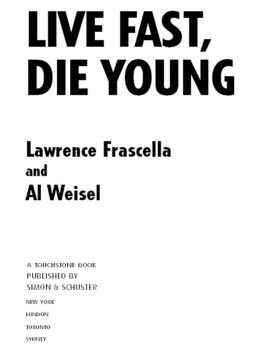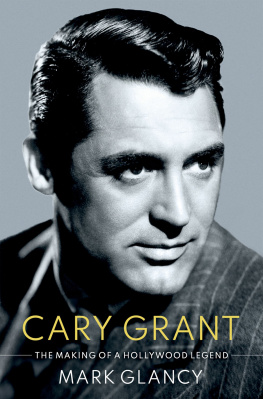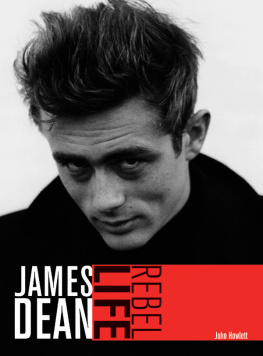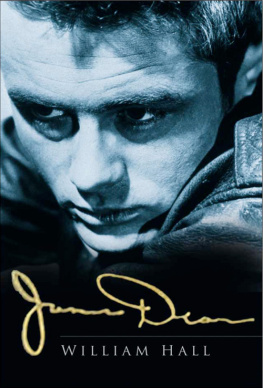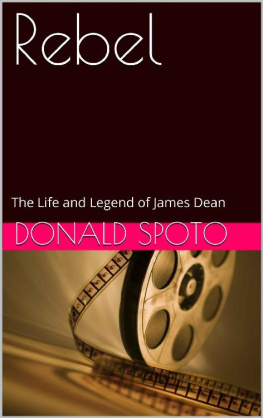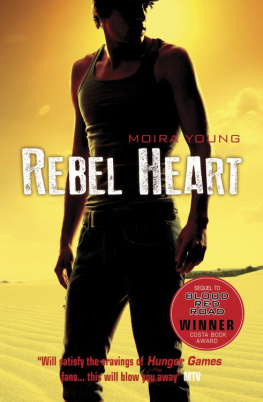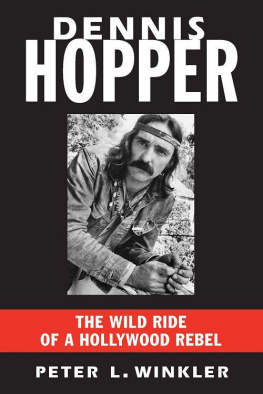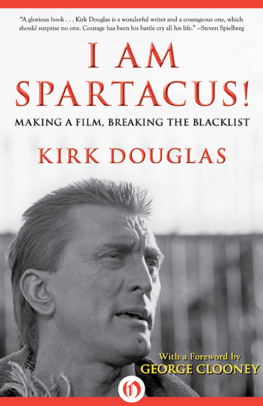
TOUCHSTONE
Rockefeller Center
1230 Avenue of the Americas
New York, NY 10020
Copyright 2005 by Lawrence Frascella and Al Weisel
All rights reserved,
including the right of reproduction
in whole or in part in any form.
TOUCHSTONE and colophon are registered trademarks of Simon & Schuster, Inc.
Designed by Joy OMeara
Library of Congress Cataloging-in-Publication Data
Frascella, Lawrence.
Live fast, die young : the wild ride of making Rebel Without a Cause / Lawrence Frascella and Al Weisel.
p. cm.
Includes bibliographical references and index.
1. Rebel Without a Cause (Motion picture) I. Weisel, Al. II. Title.
PN1997.R365F73 2005
791.4372dc22 2005050677
ISBN-13: 978-0-7432-9118-7
ISBN-10: 0-7432-9118-2
Visit us on the World Wide Web:
http://www.SimonSays.com
Contents
Introduction
Near dusk, on the evening of September 30, 1955, a telephone rang at the main gate of Warner Brothers Studios. When the guard on duty answered, a woman on the other end said that she was calling from Paso Robles War Memorial Hospital. Speaking calmly, without emotion, she told him that an actor who worked at the studio, James Dean, had been killed that evening in a car accident. Though Dean had starred in a mere three films and only one East of Eden had been released at that point, the guard knew who he was. The untamed young actors reputation in the industry was growing much faster than his film rsum. And only a few days earlier, he had been stopped by security for speeding around the lot in his brand-new Porsche and told never to drive there again because he might kill somebody.
Immediately after hanging up the phone, the guard called Warners publicity department, and word began to spread throughout town. It was like a strange wind that came right through the streets of Hollywood, said screenwriter Stewart Stern about the news. And that wind blew quickly through Deans favorite hangouts: Googies diner, the Villa Capri, the Chateau Marmont. It cast a pall over that evenings black-tie functions: the Whisper Ball, sponsored by Jane Russells new World Adoption International Fund, and the Deb Star Ball, a beauty pageant hosted by the towns makeup artists and hairstylists. At the Deb Star Ball guests thumbing through the official program were stunned to find a full-page ad that Dean had taken out thanking his makeup artist, which featured nothing but a close-up of Deans eyes staring back at them. When the wire services got hold of the story, radio and TV stations around the country interrupted their programs to announce Deans death to his growing legion of fans, young people who had responded enthusiastically to their first emotionally wrenching encounter with him in East of Eden.
Despite the immediate sense of shock and loss that accompanied the news, Deans death might not necessarily have gone on to become such an enduring tragedy on the basis of East of Eden alone. After all, Deans career had only just begun, and he wasnt the first young promising actor who would never get the chance to fulfill his potential. His sudden demise might have been just another sad story in a town full of sad stories, eventually fading away like a bad Technicolor print or a once-famous star of the silent screen. But the image of Dean was about to seep deeper into the public consciousness when, less than a month after his fatal accident, Warner Brothers released his second film Rebel Without a Cause.
Almost immediately, Deans image became inseparable from Jim Stark, the character he played in Rebel. With his white T-shirt, blue jeans and red jacket, Dean was instantly transformed into an adolescent ideal. His magnificent confusion, pained fragility, sexiness and even his narcissism made Jim Stark the template for teen rebellion. In fact, in many ways, Rebel Without a Cause invented the teenager.
Largely because of his work in Rebel, James Dean remains an undeniable force half a century after his death. But Deans presence is not the only reason for the films continuing relevance. Rebel Without a Cause asserted a romantic, mythic notion of adolescence that remains with us, that colors the way we see our own youth. And its preeminence resulted from the intense interactions of many fresh, raw-nerved personalities who came together at critical junctures in their lives and careers, including actors Natalie Wood and Sal Mineo and fledgling screenwriter Stewart Stern. Even the films young supporting playerswho portrayed the various gang memberscontributed to the films authenticity. But more than anyone, it was director Nicholas Ray who continually stoked Rebel s fire.
The forty-three-year-old Ray was someone who revered youth, who viewed adolescence as a heightened human state and who refused to relinquish the teenager in himself. He was one of the great dark neurotic geniuses of American film. He raised the bar for emotional nakedness on screen, pushing his juvenile cast to reach ever more precarious heights of film acting. Ray had a dream vision of kids creating a world of their own. And under his direction, Rays young cast coalesced into one large dysfunctional family, embarking on a journey rife with reckless behavior, deep devotion and betrayal.
Rebel Without a Cause is a film of sheer poetic expression that attempts to give shape to the internal feelings of kids alienated from the restrictions and contradictions of the adult world around them. At the time of its release, it frightened many parents with its violence, its upfront sexuality and its relentless desire to imbue teenagers with powerand glory. But in many ways, the behind-the-scenes story is more provocative than the already provocative film. James Dean stands defiantly at Rebel s center, but the unbridled emotions that were channeled offscreen are the essential source of the films dynamism and its endless ability to speak to the teenager in all of us.
Chapter One
Birth of a Rebel
In the early 1950s, director Nicholas Ray was a regular at the classic Saturday night parties thrown by actress Betsy Blair and her husband, Gene Kellythe kind of exclusive Hollywood soirees that would find Judy Garland singing at the piano, Leonard Bernstein playing charades or Greta Garbo sitting casually on the edge of the Kellys kitchen sink. Blair remembers the tall, handsome, seductive Ray with great fondness. He was always lively and iconoclastic and full of serious opinions, says Blair, who calls him a Melville hero for the way he chased dream projects and battled against the confines of the studio system. Blair knew Ray to be a compulsive womanizer, gambler and drinker, although never a sloppy drunk. But one night in July 1951, after their weekly party broke up, Blair and Kelly looked out their front window and encountered a bizarre sight.
There was a little slope in front of our house, says Blair, and I remember Nick leaving and instead of getting into his car, he sank onto the grass, just sort of lying there. I was ready to go out and get him. But Gene said, Lets see if he gets up again. And so we waited, fifteen to twenty minutes. I think Nick was actually planning to lie there all night. Eventually, we did go out and get him. Like everyone else in Hollywood, the Kellys knew that Ray had just filed for divorce from his second wife, the quintessential film noir blonde, Gloria Grahame, after a stormy three-year marriage, but they had no idea what precipitated the separation. We didnt know in the beginning what had happened, says Blair, just that they were fighting and breaking up and that he was desperate. And then, when I found out, it was hard to believe. The real story behind the breakup was shocking even by Hollywood standards.

